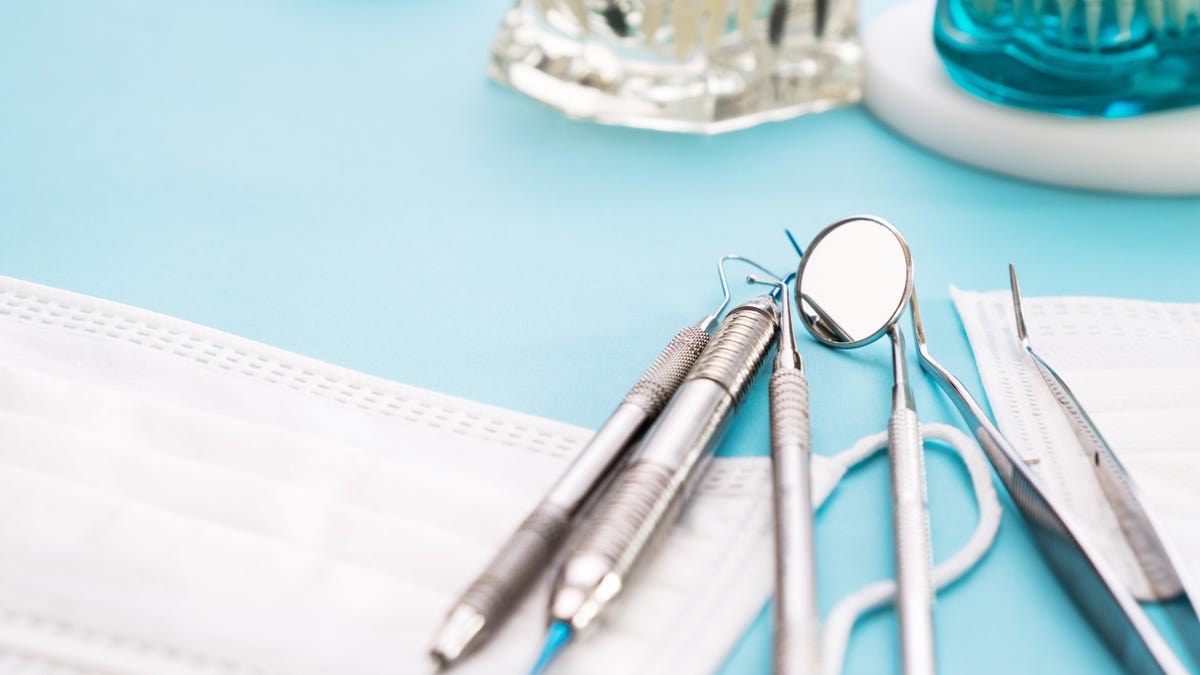How to Prepare for a Visit to the Dentist If You Haven’t Been There in Forever

Despite the time-tested wisdom that says we should visit the dentist for checkups and cleanings every six months, many of us simply… don’t. According to the CDC , about 35% of Americans have not visited a dentist in the past year. If it’s been a long time for you and you’re planning on getting back into the dentist’s chair, congratulations: you’re making the right decision about your health, self-esteem, and ability to eat.
“The first step is to make an appointment,” Dr. Ruchi Sahota, a spokesperson for the American Dental Association and a family dentist, told me. “Pick up the phone or go online. Click “Schedule an appointment.” Because you have to get into the office to even know what your options are.”
Once you’ve made your appointment, here’s what to expect and how to prepare for your dental visit.
What information should you provide to your dentist?
If you’re returning to the dentist after a long absence, you should tell the doctor what kind of toothbrush and toothpaste you’re using, as well as what tool you’re using to clean between your teeth, Dr. Sahota says. . You should also be prepared to discuss non-dental health concerns.
“It’s important to know what medications you’re taking and what you’re seeing your doctor about,” Dr. Sahota said. “Because remember, dentists are doctors of the mouth and head. And there are many problems that can happen to the rest of your body that you can see signs of in your mouth. “It’s linked to diabetes, heart problems – there’s a long list of problems that are linked to poor dental health.”
Don’t be afraid to ask questions
If you are returning to the dentist after a long absence, you will no doubt have questions and concerns that you can discuss with your dentist. To avoid forgetting anything, take notes. “Returning to any doctor after a long time can be challenging,” Dr. Sahota explained. “So a great routine is to write down any questions you might have for them.”
Please arrive early to your appointment to fill out paperwork.
Be sure to arrive 15-30 minutes early to your appointment to complete paperwork. If you are a new patient, applying for insurance and filling out the initial paperwork may take time, and even if you have been to the dentist before, you may need to update your existing file.
“You can also ask them if they can email you the documents or if you can do it online,” suggests Dr. Sahota. “This way, you have less time sitting in the waiting room wondering what’s going to happen.”
If you are concerned, be sure to let your dentist and their staff know.
Dental anxiety is common, with about 36% of people in the U.S. saying they are afraid of dental treatment and 12% saying they have a lot of fear. If this is you, let your dental office know so they can help you deal with it. “It’s very, very important to make sure you speak openly,” Dr. Sahota said. “If you’re worried, talk about it. Let the staff know… This will help the hygienist in the office, the dental assistant in the office and help the dentists know how to meet your needs.”
There are many methods to help people cope with dental anxiety, from anti-anxiety medications such as Xanax or Ativan to a warm blanket and headphones playing classical music. You and your dentist can decide what may be effective for you. “It’s helpful to talk to your dentist to have an ongoing relationship with them so the dentist can make sure they know how to manage your fears,” Dr. Sahota said. “What I do for anxious patients—all of my patients, in fact—is I ask them to give me a thumbs up if they’re okay. And I will ask them throughout the entire procedure. It helps me know they’re okay, and it also helps them know I’m checking on them and seeing the person behind the teeth.”
What to do if you are embarrassed to go to the dentist
For some people, avoiding the dentist is associated with shame rather than fear. If it’s been decades since you’ve flossed and your mouth looks like a crime scene, it’s easy to worry about what your dentist will think. But don’t do this. As bad as it was, they had seen worse.
“For me, dentistry is a math problem. I enjoy trying to put the pieces of the puzzle together and try to solve the problems of the patients I see,” said Dr. Sahota. “Sometimes these problems are simple, and sometimes they are more complex. But as long as I can help people solve their problems, it’s a good day at the office.”
Be prepared to schedule a follow-up appointment
When the appointment ends and the hygienist hands you a free thread, hopefully you’re thinking, “That wasn’t as bad as I expected,” but before you pat yourself on the back, there’s still one thing you need to do: Schedule a follow-up appointment. Don’t put off planning until later. Do it right here.